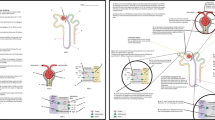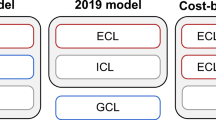Abstract
This introduction to the special issue provides a context for the contributing articles. for readers who are not familiar with cognitive load theory (CLT), it provides a very brief description of assumptions regarding memory systems and learning processes, different types of cognitive load (intrinsic, extraneous, and germane), and design implications. Whereas traditional CLT research focused on instructional methods to decrease extraneous cognitive load that is not directly relevant for learning, contributions to this special issue represent wider perspectives that reflect new developments in CLT. These articles have been organized into three categories: (a) methods to decrease intrinsic cognitive load, and deal with high-element interactivity materials, (b) methods to increase germane cognitive load that is directly relevant for learning, and (c) methods to deal with differences in learner's individual levels of expertise and expertise development. To conclude, design implications for (adaptive) e-learning are discussed.
Similar content being viewed by others
References
Kalyuga, S., Ayres, P., Chandler, P., & Sweller, J. (2003). The expertixe reversal effect.Educational Psychologist, 38, 23–31.
Kirschner, P. A. (Ed.). (2002). Cognitive load theory.Learning and Instruction,12(1), Whole Issue.
Mayer, R. E. (2001).Multimedia learning. New York: Cambridge University Press.
Miller, G. (1956). The magical number seven, plus or minus two: Some limits on our capacity for processing information.Psychological Review, 63, 81–97.
Paas, F., Renkl, A., & Sweller, J. (Eds.). (2003). Cognitive load theory.Educational Psychologist,38(1), Whole Issue.
Paas, F., Renkl, A., & Sweller, J. (Eds.). (2004). Cognitive load theory.Instructional Science,32(1–2), Whole Issue.
Penney, C. G. (1989). Modality effects and the structure of short term verbal memory. Memory and Cognition,17, 398–422.
Sweller, J. (2004). Instructional design consequences of an analogy between evolution by natural selection and human cognitive architecture.Instructional Science, 32, 9–31.
Sweller, J., van Merriënboer, J. J. G., & Paas, F. (1998). Cognitive architecture and instructional design.Educational Psychology Review, 10, 251–296.
van Merriënboer, J. J. G., Kirschner, P. A., & Kester, L. (2003). Taking the load off a learner's mind: Instructional design for complex learning.Educational Psychologist, 38, 5–13.
van Merriënboer, J. J. G., & Sweller, J. (2005). Cognitive load theory and complex learning: Recent developments and future directions.Educational Psychology Review, 17(2), 147–177.
Author information
Authors and Affiliations
Corresponding author
Rights and permissions
About this article
Cite this article
van Merriënboer, J.J.G., Ayres, P. Research on cognitive load theory and its design implications for e-learning. ETR&D 53, 5–13 (2005). https://doi.org/10.1007/BF02504793
Issue Date:
DOI: https://doi.org/10.1007/BF02504793




